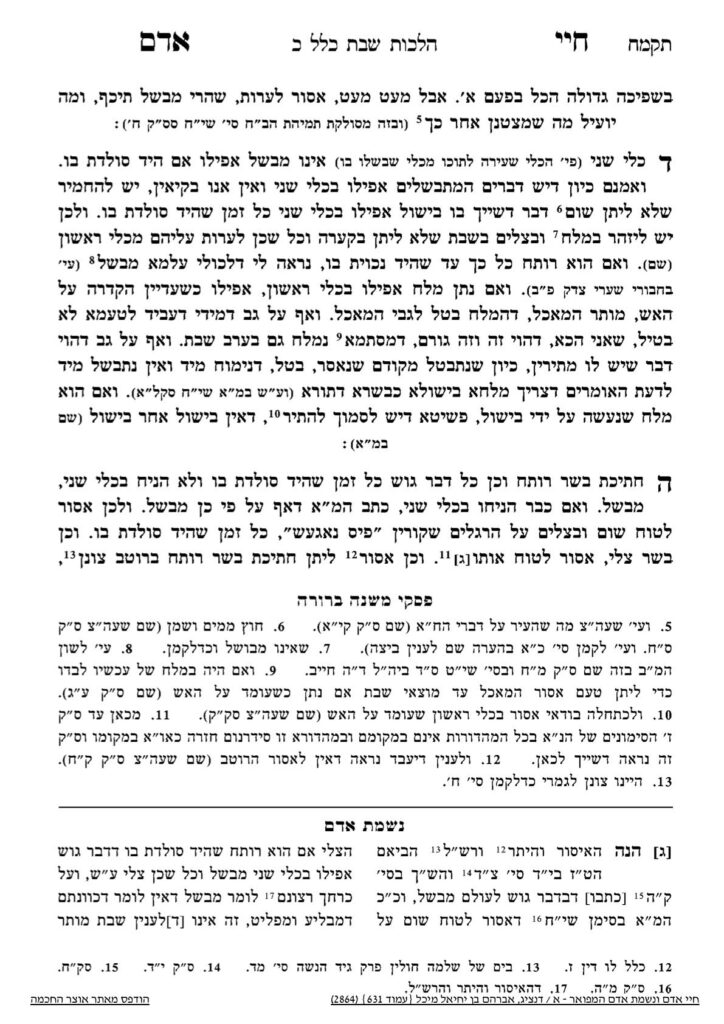We are beginning siman 4, where the Chayei Adam discusses kli sheini. The Chayei Adam writes that kli sheini does not have the ability to cook. As we have learned, kli rishon is defined as a container directly over the fire, or the hot contents of the container even after they have been removed from the fire. For example, adding raw vegetables to a soup which is removed from the fire will be bishul, because the soup is considered a kli rishon.
Similarly, irui kli rishon is assur, as we have learned. For example, pouring soup which just came off of the fire onto an onion is assur.
If the soup is poured into another container, the new container is a kli sheini. The Gemara says that the kli sheini does not have the power to perform bishul. Tosfos asks why it is not mevashel, if the soup is still clearly hot and likely above yad soledes bo. Tosfos explains that the ability of a kli rishon to continue to cook after it is removed from the fire is due to the walls of the kli rishon retaining heat from when it was on the fire. The heat from the walls helps the pot maintain its temperature. However, when it comes to a kli sheini, the heat of the soup goes into the bowl, but the walls are room temperature, so they take heat away from the food.
One of the meforshim in Maseches Shabbos proves from this point the idea we discussed yesterday, that bishul is not instantaneous. If it were instantaneous, the temperature of the walls of the kli sheini would make no difference, since the cooking would occur immediately. The fact that a kli sheini cannot perform bishul proves that bishul is not instantaneous. Therefore, since the walls cause the continents to cool over time, the contents cannot maintain the heat necessary to cook for long enough to cook the new raw food.
It is important to note that there is a concept of kalei habishul, which are items that cook easily and therefore cook in a kli sheini. The Gemara gives some specific examples, and the meforshim discuss whether the concept is limited to the examples of the Gemara or should be expanded to other items as well. If we are concerned that kalei habishul could include other foods, the only foods which would be muttar to cook in a kli sheini would be those which the Gemara states explicitly are muttar, since everything else is in a state of safeik out of concern it is kalei habishul. On the other hand, if we assume kalei habishul is limited to the items explicitly stated by the Gemara, all other foods will be muttar to cook in a kli sheini. The Chayei Adam follows the opinion that there are other items included in the definition of kalei habishul. We will discuss this concept further in the upcoming shiur, be’ezras Hashem.
Summary
Kli sheini is defined as the container into which a kli rishon food is transferred.
It does not have the power of bishul because the walls of the container are not hot, so they cool the food as the food transfers heat into them.
However, if the item is defined as kalei habishul, items which cook easily, it will cook in a kli sheini.



